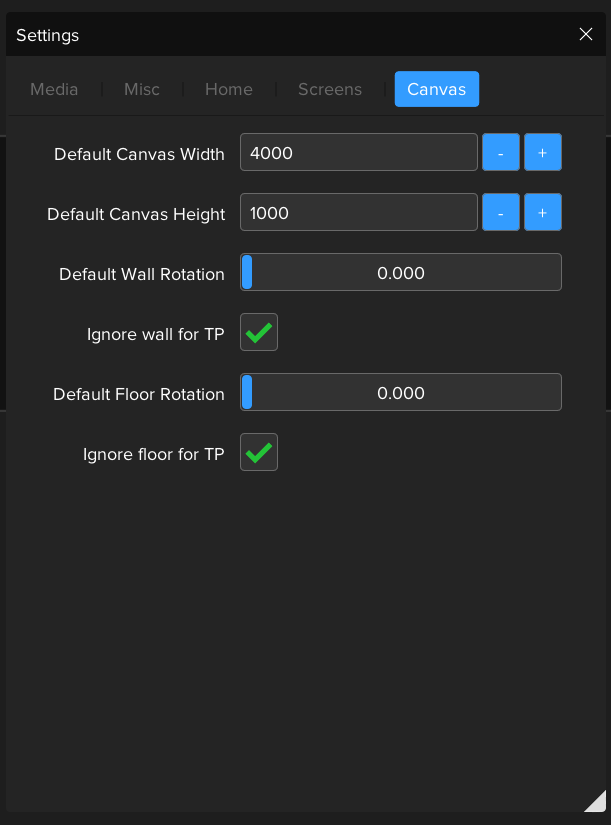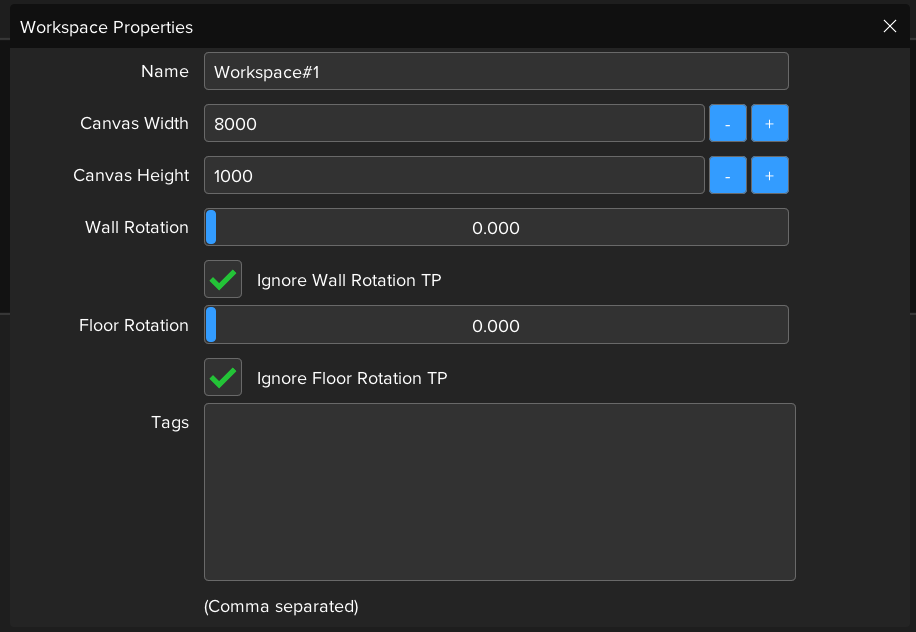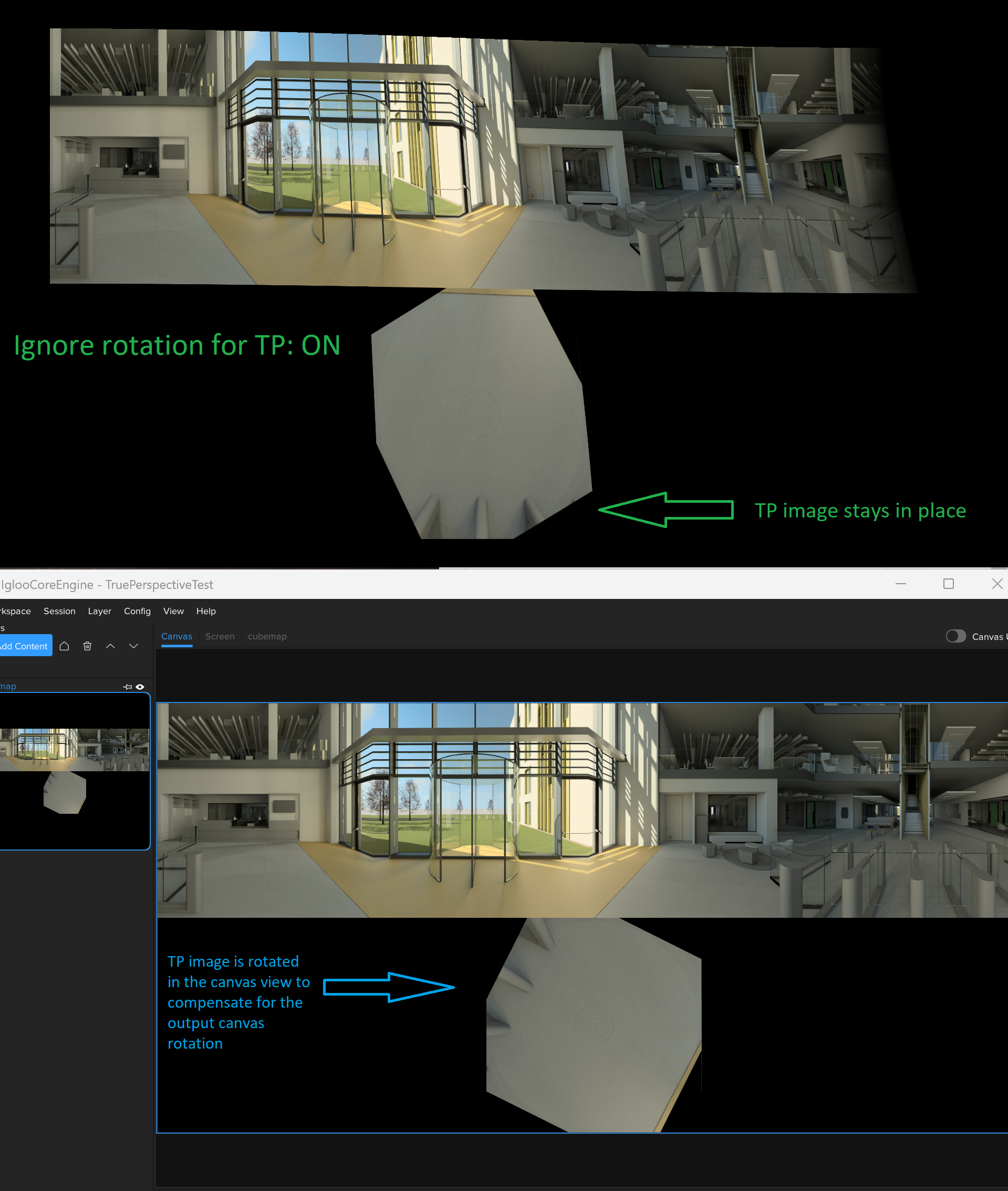Canvas Configuration
Output rotation
The output canvas rotation can be adjusted to suit your needs. This feature is particularly useful when the projectors or Igloo Setup regions result in the canvas centre being located in a corner of the room. By default, new layers in ICE are placed at the centre of the canvas. However, in most cases, it is more desirable to have the canvas centre positioned in the middle of the room.

Not ideal

Better output orientation
When adjusting the output rotation, it is important to note that the changes will only impact the output before warping is applied. This means that the desktop canvas tab view will remain unchanged. To see the effects of the new rotation, navigate to the Screen tab. Here, you can observe how the canvas is applied to the 3D preview of your screen.
Floors and walls
In the Igloo Setup app, you have the option to export both a wall and a floor region. While a wall region is always exported, the floor region is optional. This will create two separate regions in the output settings file named CanvasSettings.xml.
The rotation of the wall is applied horizontally, causing the output to shift accordingly. On the other hand, when you apply rotation to the floor region, it will rotate around its own center.
CanvasSettings.xml
The output settings file named CanvasSettings.xml is exported from Igloo Setup and is also where the default settings are saved. Please note that a wall "roi" (region of interest) is always exported. However, the floor region will only be included if it is selected in Igloo Setup.
<CanvasSettings>
<Resolution>
<width>4000</width>
<height>1000</height>
</Resolution>
<ScreenType>
<type>Box</type>
<rois>
<roi type="floor" x="0.365517318" y="0.500000000" w="0.249999970" h="0.500000000" />
<roi type="walls" x="0.000000000" y="0.000000000" w="1.000000000" h="0.500000000" />
</rois>
<IgnoreWallRotationTP>1</IgnoreWallRotationTP>
<IgnoreFloorRotationTP>1</IgnoreFloorRotationTP>
<defaultWallRotation>0</defaultWallRotation>
<defaultFloorRotation>0</defaultFloorRotation>
</ScreenType>
</CanvasSettings>
The settings window in ICE includes a tab named "Canvas" that allows you to modify the variables in the XML file. These values will be used to initialise every new workspace that you create. Once a workspace has been created, you can further customize it by adjusting the workspace properties.

Settings window, Default settings can be changed in the Canvas tab

Workspace-specific values are the ones actually in effect. They are saved per workspace.
Ignore rotation for True Perspective
The two checkboxes named "Ignore wall/floor rotation TP" determine how layers using the TruePerspective (TP) effect behave in relation to the canvas rotation. Rotating the canvas output of a true perspective layer can disrupt the true perspective effect. For example, the true perspective effect expects the corners of the room to be in a fixed position, but changing the output rotation can cause the corners calculated by the true perspective shader to be misaligned with the physical corners of the room.
When "Ignore wall/floor rotation TP" is enabled, all layers that use true perspective will automatically adjust their output to compensate for the canvas rotation. As a result, even though other UI elements and non-TP layers may be rotated, the image of a TP layer will appear to remain in the same position. To change the orientation of a TP layer, you should adjust the "Heading" variable in the TP menu.
It is important to note that when "Ignore wall/floor rotation TP" is enabled, the TP layer texture will still be rotated in the console Canvas tab. However, what you see on the output is the compensation for the rotation being applied, which makes the TP layer appear stationary..

Ignore rotation ON

Ignore rotation OFF
